|
Most of these images were captured during a 5-day canoe expedition through the Adirondacks in July 2019 with some of the members of Gryffin's Scout troop. Two images were made after returning to Henderson Scout Reservation, and the last was exposed in similar lighting conditions at home, as a sacrificial developing test.
For the technically inclined, I used Ilford FP4 Plus black and white film, tray-processed in Ilfosol 3 developer. These images do not represent finished prints. They are just quick "scans" of the negatives, made using my Canon DSLR. I have started to print some of these images though, and will replace the DSLR scans with images of my actual paper prints as time permits. Click any image for a larger view. | ||
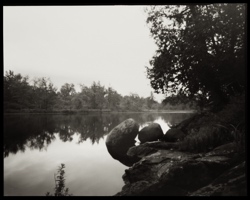
Raquette River - First Day Out
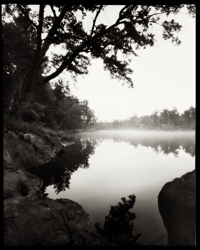
Raquette River Mist
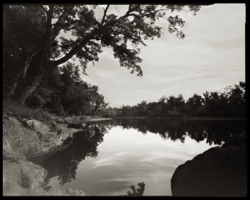
Raquette River
| ||
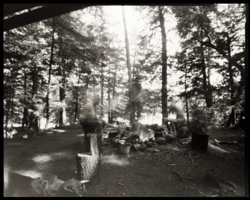
Scouts and campfire
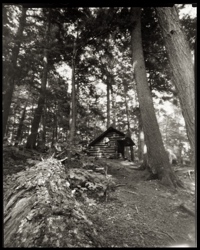
Adirondack Lean-To
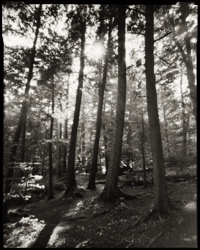
Sun and Trees
| ||

Sentinel Rock, Tupper Lake 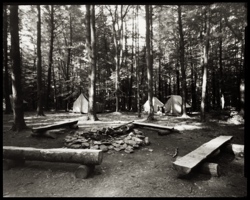
Camp Firepit
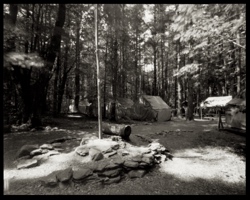
Troop 9 Flagpole
| ||

Still River, Danbury, Connecticut
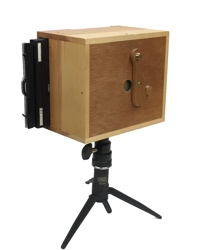
Camera with shutter open
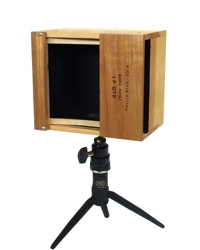
Camera back | ||
|
The camera body is constructed from pine, cherry, and mahogany plywood, with a few brass accents. I also steam-bent strips of hickory to form the springs which secure the film holder. The camera features a 75mm focal length, and an effective aperture of F205. The pinhole diameter is 0.014 inches, and was formed in 0.002-inch brass shim stock using a pin.
The small pinhole requires exposure times (listed under each image) that are much too long for handholding the camera. The third image was exposed for a relatively brief two seconds, made possible by the direct sunlight about two hours after sunrise. In truth, the negative is a bit under-exposed, and could have benefited from a four-second exposure, it not more. For comparison, a conventional camera using this same film could have captured that same view in 1/125 of a second. I used the tabletop tripod shown for stability throughout our trip, and a full-size tripod for the last three images. The 75mm focal length gives an angle of view similar to that realized with a full frame 35mm SLR and 24 mm lens. The diagonal angle of view is just over 90 degrees, which translates to about 80 degrees across the 5-inch length of the image area, and 68 degrees along the shorter 4-inch dimension. I left the camera back open to allow easy access to the pinhole and shutter mechanism. This also allowed packing my light meter and exposure calculator within the camera body during the canoe trip. The small brass screws on the camera top and right side assist framing, though nothing is guaranteed with a pinhole camera. | ||
|
Copyright 2020, Thayer Syme | ||